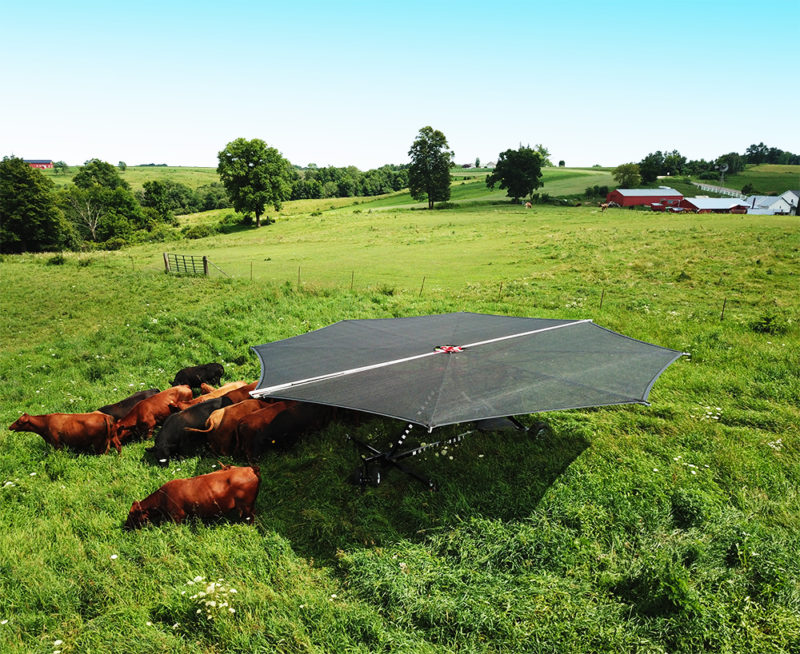Rotational grazing returns nutrients to the paddock for improved pasture fertility, without the need for costly inputs. Mobile shade adds further pasture-improving benefits by distributing nutrients evenly throughout a paddock, even under a blazing summer sun.
“The issue on those hot summer days is not the addition of nutrients, it’s the distribution of nutrients,” explains Wisconsin beef farmer and rotational grazier Jim Munsch.
If there are trees in a pasture, livestock will congregate there and deposit nutrients primarily in that area. “With Shade Haven even on those blistering hot days, you can put the shade out on the paddock where you have the best grass for those animals for that day, and you don’t have to worry about it,” says Munsch.
Move the shade and cows will follow. Munsch adds, “Wherever you have a negative migration of nutrients…a way to get nutrients back into that place is to bring shade there on a sunny day.”
Ohio farmer Drausin Wulsin [shown below with wife, Susan] purchased his first SH1200 mobile shade system for the 2017 grazing season. Wulsin calculated a hefty return on his investment in just one year, based on the fertilizer that was deposited around his pasture instead of the treeline.
“If Manure is valued at $14/ton or $.007 per pound, and the Shade Haven houses 40 cows for 120 days, it provides a $2,755 value per year by depositing manure in the pasture, not under the trees,” says Wulsin. “That’s a 14% annual return on investment.”
“Add to that the value of milk saved from reduced heat stress, and the ROI goes even higher, toward 20 to 25% perhaps,” continues Wulsin. “Not many investments offer that kind of return.”
Wulsin was so impressed with the value of the Shade Haven, he purchased a second unit for the 2018 grazing season.
To sum it up…rotational grazing combined with mobile shade adds up to increased fertility and profitability. Munch notes, “On our farm, we have not applied purchased fertilizer to our grazing land in 25 years.”
